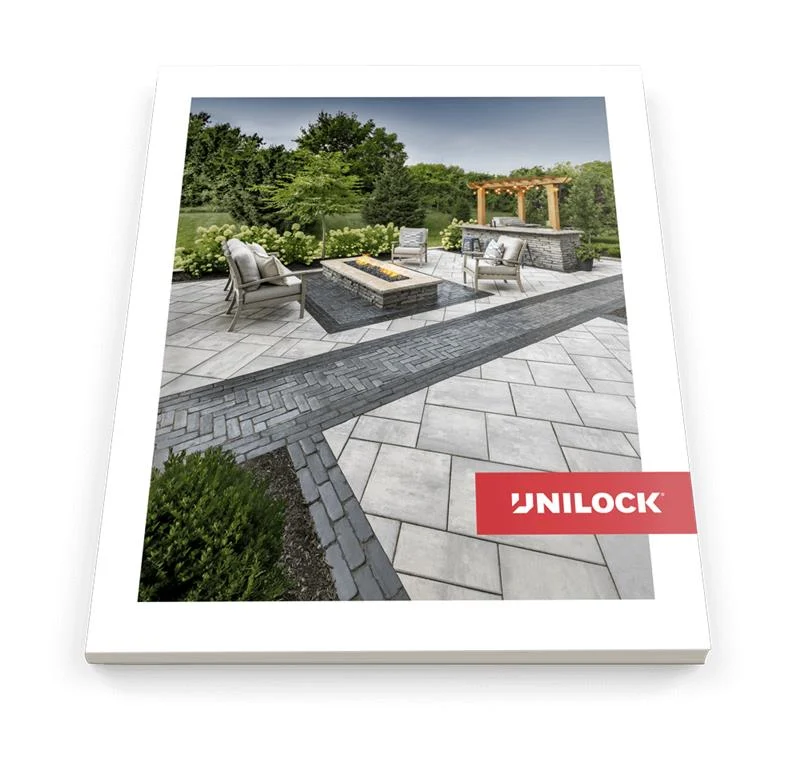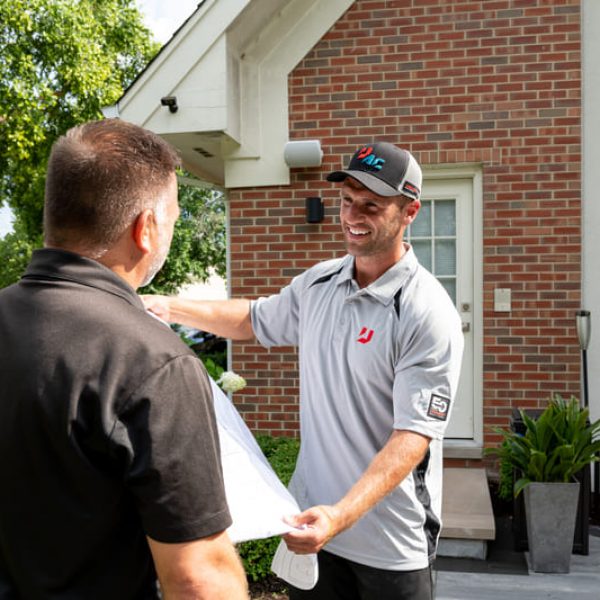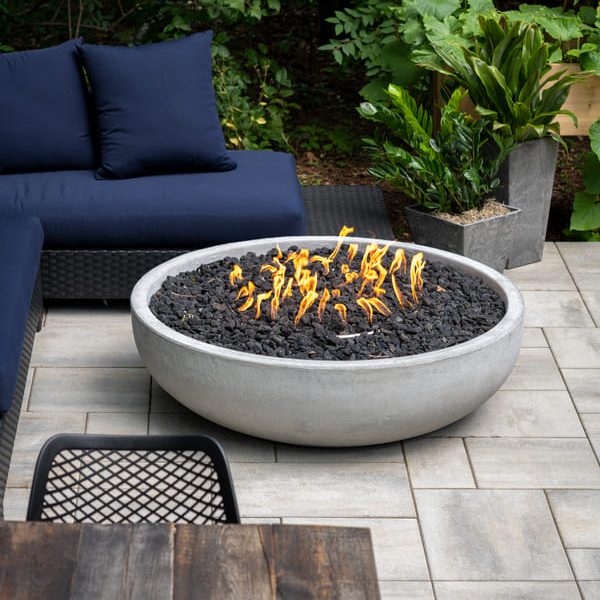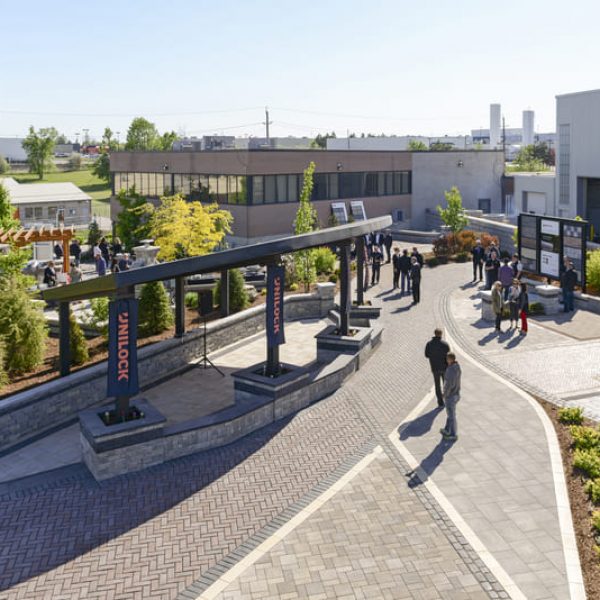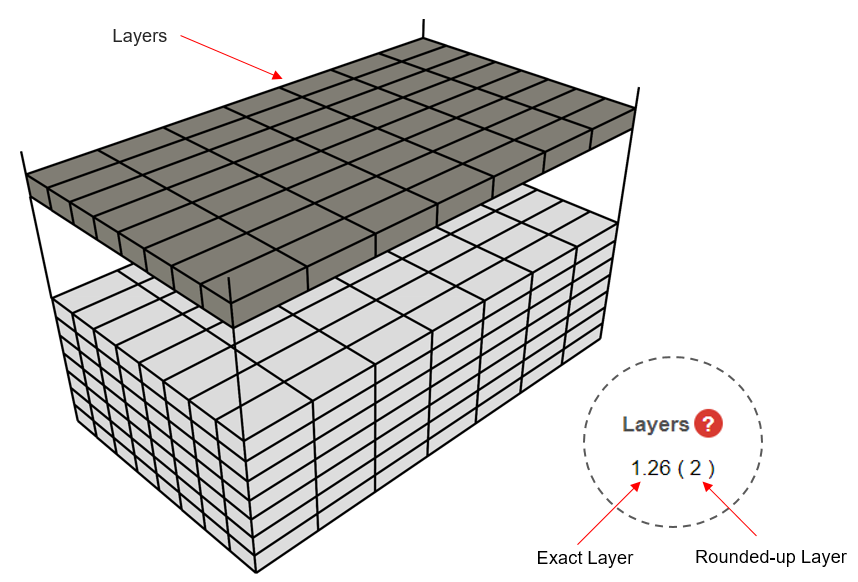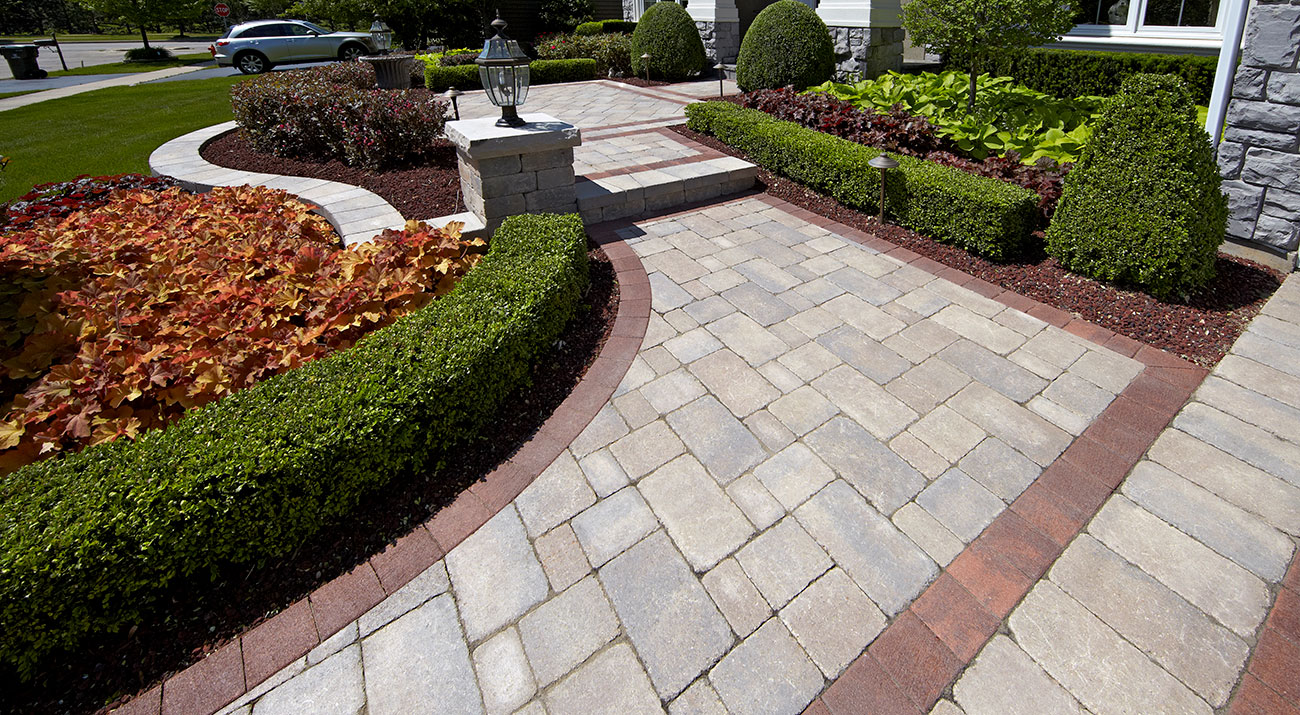
Beautiful walkways are a must for any Saint Louis landscape design, both in terms of function and aesthetic. However, walkways aren’t worth much without scenery to enjoy while using them. Here we’ll take a look at some ideas to help you enhance your walkways with plantings:
Working Around Existing Plants
When building a new walkway, it’s sometimes tempting to go wild with the design without taking into account the existing landscape and the plants that inhabit it. Slow-growing plants, and trees in particular, don’t need to be torn out just to accommodate a straight path to the front door. Consider utilizing the flexibility of Unilock pavers to embrace and include these features, which might otherwise be considered obstacles. For example, small Courtstone pavers allow for the inclusion of tight, winding turns. These can be used to build a walkway that encircles an old tree or shrub.
Related Read: 6 Pavers to Accent your Central Illinois Driveway
Walkway Border Beds
Lining your walkway with border beds is a simple way to enhance the feature and, in so doing, your entire front- or backyard. What’s important to remember here is that plants can be selected to match, contrast, or complement surrounding hardscape features, just as with any other decorative element. For example, plants with fine detail: reeds, ornamental grasses, and small-leafed shrubs, pair well with pavers that offer bolder, more rugged textures, such as Beacon Hill Flagstone. Similarly, deeply colored pavers, such as Richcliff in the Smoke Shale color option, pair well with lush greenery and bright, showy flowers.
Multi-Level Plant Beds
If the scenery in your landscape is lacking, or if the view from your walkway consists of flat, boring lawn, it might be time to introduce some height variation into your landscape. This can be done with raised or multi-level plant beds. In addition, walkways that skirt steep slopes will often become muddied when it rains, because of eroded soil being swept down the hill and settling on the flat surface of the walkway. Multi-level plant beds, or terracing, can provide a solution to this as well.
Raised plant beds can help to lift low-lying flowering perennials up to a height at which they can be better appreciated by passersby. In addition, the vertical units used to create the retaining wall can be selected to complement your walkway pavers and the aesthetic theme of your landscape. An Estate Wall multi-level terrace, for example, will not only effectively contain the soil of a plant bed, it will also contribute a regal, aged natural rock aesthetic to your landscape.
Patio or Walkway Integrated Flower Beds
Keeping flower beds relegated to the borders of your walkway is not the only way to bring color to your hardscape. In the case of wide walkways, a flower bed island, or plant bed divider, can help to keep things interesting. Imagine, for example, the welcoming a Brussels Block and Copthorne walkway leading up to the front of the home, wrapping around a large, circular flower bed overflowing with brightly colored perennials would offer guests. For less expansive walkways, introducing integrated flower beds in the form of cut-aways where the walkway meets a patio, for example, can have a similar effect.
